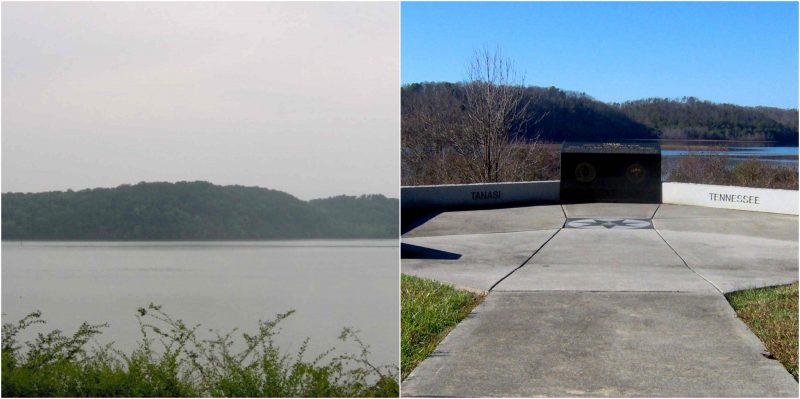Tanasi was an historic Overhill Cherokee village site in present-day Monroe County, Tennessee, in the southeastern United States. The village was the namesake for the state of Tennessee. Abandoned by the Cherokee in the 19th century, since 1979 the town site has been submerged by the Tellico Lake impoundment of the Little Tennessee River. Tanasi served as the de facto capital of the Cherokee from as early as 1721 until 1730, when the capital shifted to Great Tellico.
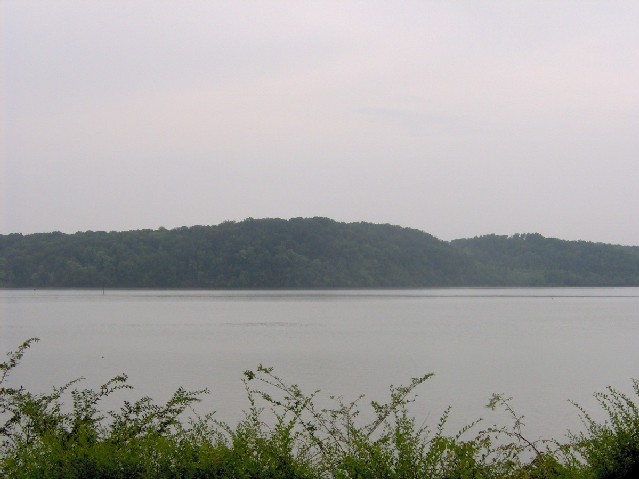
Tanasi first appears on the historical record in the early 18th century, at a time when the fur trade between the English and the Cherokee had grown to the extent that the colonists wanted to regulate it. Ethnologist James Mooney reported that the meaning of the town’s name is unknown, but noted that it was used for other places among Cherokee lands in Tennessee and North Carolina. The Cherokee name for the river upon which Tanasi was situated was probably Callamaco, but early Euro-American explorers and traders renamed the river after Tanasi.
Among the earliest English agents to reside at Tanasi was Eleazar Wiggan — nicknamed “Old Rabbit” by the Cherokee — who operated as early as 1711. He served as a guide for later colonial diplomats and emissaries. In 1725, South Carolina dispatched Colonel George Chicken to Tanasi to obtain Cherokee assistance in the colony’s struggles with the Creek. Chicken indicated in his journals that the chief of Tanasi — known as the Tanasi Warrior or Head Warrior of Tanasi — ruled over the Cherokee Overhill, Middle, and Valley towns in the region. Chicken recorded a speech in which the Tanasi Warrior pledged support for the English. The two later engaged in a pipe-smoking session in which the Tanasi Warrior told Chicken of recent Creek hostilities in the area. Colonel John Herbert visited Tanasi on a similar mission in 1727, and reported meeting with the “King and Long Warriour” of Tanasi at the Cherokee townhouse.
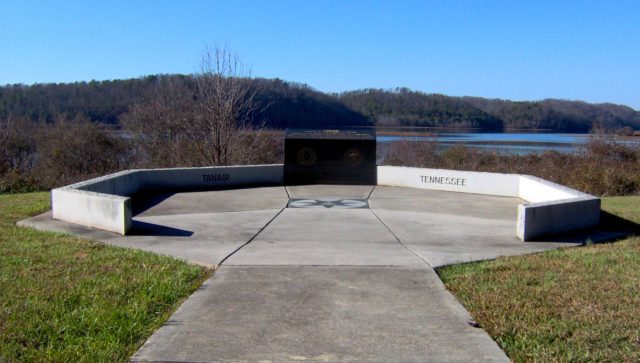
In 1730, Sir Alexander Cuming, a trader claiming to be an emissary of King George II, journeyed to Tanasi and obtained the Tanasi Warrior’s allegiance for England. As evidence of his success, Cuming sought an esteemed symbolic headdress known as the Crown of Tanasi — described as resembling a wig made of dyed possum hair — which he hoped to present to the king of England. To obtain this headdress, Cuming enlisted the aid of Moytoy, chief of Great Tellico. Cuming used his flamboyance to convince the Cherokee to crown Moytoy “Emperor of the Cherokee.” In exchange, Moytoy obtained the headdress sought by Cuming. Cuming departed for England shortly thereafter, taking with him a party that included Eleazar Wiggan, future Cherokee leader Attakullakulla, and two Tanasi warriors named Clogoittah and Oukanaekah to present to the king.
The crowning of Moytoy in 1730 shifted the Cherokee center of power to Great Tellico, which was situated along the Tellico River roughly 16 miles (26 km) southwest of Tanasi. After the death of Moytoy in 1741, however, Old Hop, the chief of Chota, began to consolidate power. The influence of Chota soon overshadowed that of Tanasi, and by the early 1750s, Chota had become the more dominant town. In 1765, Henry Timberlake, who had visited the Overhill towns as an emissary in 1761–1762, reported 12 dwellings and 21 warriors at Tanasi, and identified Old Hop as chief of both Chota and Tanasi. In 1775, the Tanasi Warrior was among the chiefs who signed a treaty with the Watauga Association of Carolina colonists.
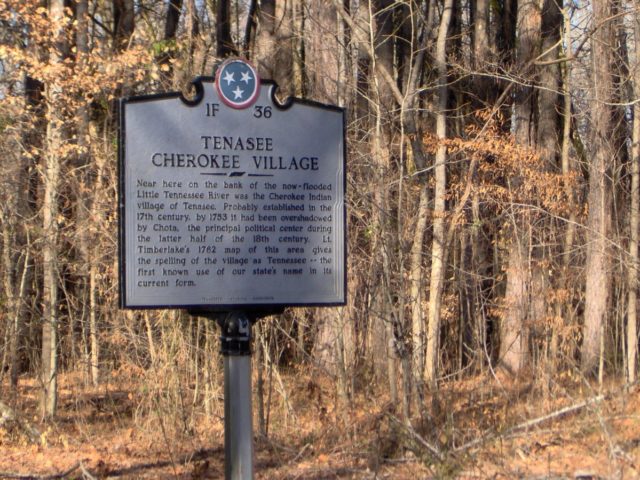
Tanasi’s relationship with Chota has long puzzled historians and archaeologists. Some have speculated that the two towns were a single community with two districts and two governments, not unlike the situation that reportedly existed in Great Tellico and Chatuga around the same time. Excavators in the early 1970s noted virtually no differences in the types of cultural materials and features uncovered at the two village sites. 18th-century traders and diplomats, however, clearly identified these as two separate towns.
Tanasi was reported by Euro-American traders from their first explorations in the region in the early 18th century, but Chota does not appear in the historical record until around 1745. The maps of John Herbert and George Hunter, drawn in 1727 and 1730, respectively, show Tanasi but not Chota. In 1746, English agent George Pawley met with Cherokee leaders at the Chota townhouse, indicating Chota had usurped Tanasi as the more dominant town. Missionary William Richardson visited the Overhill towns in the late 1750s and described Chota and Tanasi as being separated by a “small river.” Richardson’s description is supported by Timberlake’s 1762 map, which recorded the two towns’ sites.
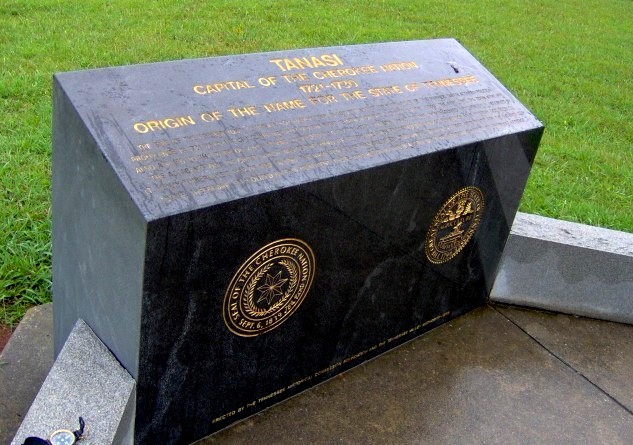
Cyrus Thomas, working for the Smithsonian Institution’s Bureau of Ethnology, conducted a mound survey at the Chota-Tanasi site in the late 1880s. Thomas reported the discovery of 13 burials and several artifacts. In 1939, Thomas Lewis and Madeline Kneburg directed an excavation at the Chota-Tanasi site with the help of the Works Progress Administration. Lewis and Kneburg, who were searching for cultural data with which to compare their earlier finds at Hiwassee Island, uncovered 22 burials, 85 pit features, 982 postmolds, and one structure. Between 1969 and 1974, University of Tennessee archaeologists conducted excavations at the Chota-Tanasi site in anticipation of the flooding of the site by the construction of Tellico Dam. Two excavations — one in 1970 and one in 1972 — were focused specifically on Tanasi.
Although artifacts dating to the Archaic period (and even a fluted projectile point dating to the Paleo-Indian period) were uncovered at the Chota-Tanasi sites, excavations were mostly focused on the sites’ Cherokee occupation. Along with locating the two village sites, investigators hoped to find evidence that would shed light on the Cherokee peoples’ relationship to the region’s Mississippian-era (c. 900–1600 A.D.) occupants.
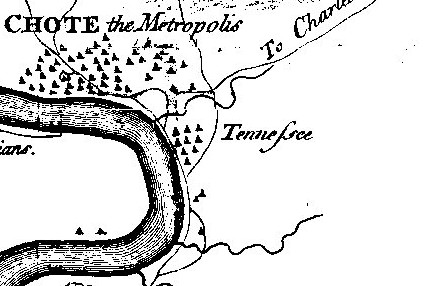
The 1972 excavations uncovered 191 features, 22 burials, 1005 postmolds, and 6 structures at the Tanasi site alone. Two townhouses were uncovered at the Chota-Tanasi sites, one of which was slightly smaller and older than the other. The older of the two townhouses may have been the Tanasi townhouse, which traders and emissaries reported in the 1720s. But, it is also possible that the older townhouse was an earlier version of the Chota townhouse, and that excavators failed to uncover the Tanasi townhouse. The older townhouse had a diameter of just over 50 feet (15 m). In 1986, the remains of the 22 burials uncovered at Tanasi — along with those uncovered at Chota — were reinterred in a burial mound at the Sequoyah Museum near Vonore.
